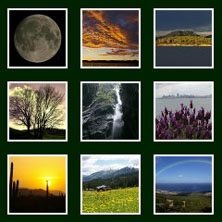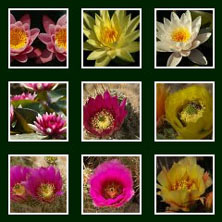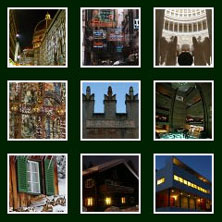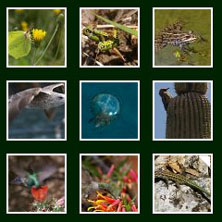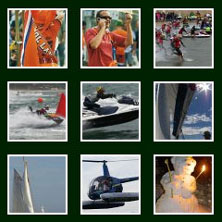Friday, August 12, 2022
SBB RAe II TEE 'Gottardo'
The legendary SBB RAe II Gotthardo made recently a tour from Olten to the Swiss 'Seeland' between Biel/Bienne, Murten and Neuchatel. Some impressions:
Thursday, November 3, 2016
Trees in the clouds
During the last days we had a quite typical weather situation for fall in southwest Germany and Switzerland: stable high-pressure weather which results often in dense fog in the valleys and sun on the mountains. I had last weekend the opportunity to visit the area of Emmental in Switzerland, the hills there were just high enough to be above the clouds (fog) while some lower hills were still partly covered with fog and clouds. A chance to take some nice pictures with mystic “trees in the clouds”.
 |
| Trees in the clouds I |
 |
| Trees in the clouds II |
 |
| Trees in the clouds III |
 |
| Trees in the clouds IV |
 |
| Trees in the clouds V |
Thursday, September 11, 2014
Urach Waterfall
45 minutes away from Stuttgart by car is the Urach Waterfall. Urach is a little city at the northwestern drop of the Swabian Jura (German: Schwäbische Alb), a mountain range build out of different limestone formations from the Jurasic period. The Schwäbische Alb is actually a high plateau that drops to the northwest about 400 meters, little rivers cut narrow valleys, sometimes canyon-like into the rocks. Some of the rocks and hills are crowned with castles or ruins of castles. One of them is the Urach castle overlooking Urach. Urach itself has a nice historic city center, but maybe the greatest attraction is the nearby Urach Waterfall. The waterfall can be reached from different parking spots in about 40 minutes to one hour by foot. The Urach Waterfall is one of the highest Waterfalls in Germany outside the Alps. It has a vertical drop of about 37 meters.
This waterfall has something unusual – while other waterfalls cut into the rocks and over time their step is moving backwards – this waterfall lets the rock it flows over grow over the years. The waterfall is feed by a nearby karst spring. The spring water is saturated with calcium hydrogen carbonate (carbon dioxide solved calcium carbonate in the underground), when the water gets in touch with the atmosphere calcium carbonate precipitates and tufa rock is created, actually a real plateau was created over the ages. Fern and Moss growing around the waterfall is covered by tufa. And even where the waterfall leaves the rock the tufa from the water is creating a overhanging chute, which breaks down from time to time if gets to heavy.
Enough introducton, now some pictures:
This waterfall has something unusual – while other waterfalls cut into the rocks and over time their step is moving backwards – this waterfall lets the rock it flows over grow over the years. The waterfall is feed by a nearby karst spring. The spring water is saturated with calcium hydrogen carbonate (carbon dioxide solved calcium carbonate in the underground), when the water gets in touch with the atmosphere calcium carbonate precipitates and tufa rock is created, actually a real plateau was created over the ages. Fern and Moss growing around the waterfall is covered by tufa. And even where the waterfall leaves the rock the tufa from the water is creating a overhanging chute, which breaks down from time to time if gets to heavy.
Enough introducton, now some pictures:
 |
| The water flows over the overhanging chute. |
 |
| The waterfall's spray |
 |
| Urach Waterfall from below, after 37 meters of vertical drop, drops another 50 meters over several cascades. |
 |
| The surrounding forrest |
 |
| Approaching from the southeast through a little canyon |
Labels:
Stuttgart,
Swabian Jura,
Waterfall
Monday, January 23, 2012
Seoul
Last December I spent a few days in South Korea for business - mostly in Seoul. Our agenda was quite full, we visited every day several companies. Typically we were picked up at 8:30 am at the hotel and often we didn’t get back before 8 pm or we had even a business dinner at the evening. That left not much time for sight seeing and taking pictures. At least at the days of arrival and departure I managed to visit some of the palaces.
I stayed at the Westin Chosun Hotel which is located in the vicinity of the town hall and the major department stores.
Gyeongbokgung Palace
The Gyeongbokgung Palace (‘Palace of Shining Happiness’) is a royal palace located in northern Seoul. It is in a walking distance from the city hall. One could describe it better as a palace city than just a palace. First constructed in 1394 was it the main and largest palace of the Five Grand Palaces built by the Joseon Dynasty in Seoul. The palace was once nearly destroyed during the Japanese invasions of Korea (1592–1598), and then reconstructed in 1867 to form a complex of 330 buildings and 5792 rooms. It was then destroyed again during the Japanese occupation of Korea after 1911, more demolition was happening to the palace city during the Korean War.
More information about the Gyeongbokgung Palace at Wikipedia.
The Hyangwonjeong Pavilion built in the late 19th century. Today the bridge leads from the south to the island. The original bridge was connecting the island from the north, it was destroyed during the Korean War.
Gyeonghoeru Pavilion, is a hall that was used to hold important and special state banquets during the Joseon Dynasty. The present building was constructed in 1867. The first Gyeonghoeru was built during the early 15th century, but it was burned down during the Japanese invasions of Korea in 1592
Changdeokgung Palace and Changgyeonggung Palace
Changdeokgung (‘Palace of Prospering Virtue’) is located in the north-eastern part of Seoul. Again this is rather a palace city, it was also heavily destroyed during the Japanese occupation. In 1997 Changdeokgung became a UNESCO World Heritage.
More impressions from Seoul
Some evening left the chance to discover the neighborhood and also the company visits gave the opportunity for some photographic expressions.
.
Other places I visited and I would recommend to visit when staying in a down town hotel are:
Namdaemun Market – a rather traditional market with lots of little stands and shops. In the evening cook shops are dominating.
Insa-dong – a street with an interesting mixture of galleries, boutiques and souvenir shops.
This pictures were taken with the wide-angle (12-24 mm), the standard zoom (18-55 mm) and the tele zoom (70-300 mm).
I stayed at the Westin Chosun Hotel which is located in the vicinity of the town hall and the major department stores.
Gyeongbokgung Palace
The Gyeongbokgung Palace (‘Palace of Shining Happiness’) is a royal palace located in northern Seoul. It is in a walking distance from the city hall. One could describe it better as a palace city than just a palace. First constructed in 1394 was it the main and largest palace of the Five Grand Palaces built by the Joseon Dynasty in Seoul. The palace was once nearly destroyed during the Japanese invasions of Korea (1592–1598), and then reconstructed in 1867 to form a complex of 330 buildings and 5792 rooms. It was then destroyed again during the Japanese occupation of Korea after 1911, more demolition was happening to the palace city during the Korean War.
More information about the Gyeongbokgung Palace at Wikipedia.
 |
| Change of the guards at Gwanghwamun gate, the southern entrance to the palace |
 |
| The western front of the Geunjeongjeon (Throne Hall) |
 |
| Hyangwonjeong Pavilion |
 |
| Gyeonghoeru Pavilion |
 |
| Modern and historic Korea sets a nice contrast. |
Changdeokgung Palace and Changgyeonggung Palace
Changdeokgung (‘Palace of Prospering Virtue’) is located in the north-eastern part of Seoul. Again this is rather a palace city, it was also heavily destroyed during the Japanese occupation. In 1997 Changdeokgung became a UNESCO World Heritage.
 |
| Main gate |
 |
| A pagoda detail |
 |
| Towards the Injeongjeon Hall |
 |
| Nakseonjae |
More impressions from Seoul
Some evening left the chance to discover the neighborhood and also the company visits gave the opportunity for some photographic expressions.
 |
| Myeong-dong is a busy modern shopping district… |
 |
| …but traditional snacks are cooked freshly on the streets |
 |
| View on the Han River from the LG twin towers |
 |
| The technology Seoul: Samsung show room ‘d’light’ |
Other places I visited and I would recommend to visit when staying in a down town hotel are:
Namdaemun Market – a rather traditional market with lots of little stands and shops. In the evening cook shops are dominating.
Insa-dong – a street with an interesting mixture of galleries, boutiques and souvenir shops.
This pictures were taken with the wide-angle (12-24 mm), the standard zoom (18-55 mm) and the tele zoom (70-300 mm).
Tuesday, January 17, 2012
Door knockers of Mdina, Malta
During a walk through the historic center of Mdina which was the old capital of Malta during the medieval ages I caught a variety of door knockers. The door knockers are iron, bronze or brass and accentuated on the colored wooden doors.
Subscribe to:
Posts (Atom)



















